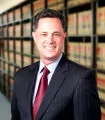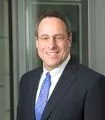Introduction
Since the outbreak of the novel coronavirus, or COVID-19, reports have surfaced nationwide that certain supplies and goods—many now deemed essential or in high demand—are being offered at exorbitant prices: a small bottle of hand sanitizer selling for $49.95;1 a package of disinfecting wipes priced at $220;2 a single zip-lock bag for $10.3 Such reports have put local, state, and federal authorities on the lookout for "price gouging"—the practice of unjustifiably and unreasonably increasing the price of high-demand goods or services above their prevailing pre-crisis cost. For example, on March 23, 2020, Attorney General William Barr announced the development of a Covid-19 Hoarding and Price Gouging Task Force, and identified law enforcement strategies for pursuing "bad actors who treat the crisis as an opportunity to get rich quick."4 Both before and following that announcement, state attorneys general across the country made similar commitments.5
The term "price gouging" conjures images of scammers seeking to capitalize on a crisis. But not all price increases in a time of emergency are attributable to unscrupulous sellers. Scarcity, manufacturing difficulties, disrupted supply chains, and other factors may explain what otherwise appears to be an excessive price increase. In this climate, businesses must balance their right to remain profitable against various legal constraints, many of which are not so clear. And a business's pricing considerations do not end with legal analysis—public perception matters, too. Many businesses may decide that negative press or public criticism from a lawful price increase outweighs the benefit from otherwise appropriate sales.
This Advisory summarizes the range of price-gouging prohibitions, how those laws work in practice, and the ways in which companies might address the specter of price-gouging accusations or investigations in the current environment. Compliance with the federal and state price-gouging laws may require a complex and nuanced analysis. Businesses should consult with counsel if they are concerned that their pricing decisions may not comply with applicable laws and regulations.
WHAT BUSINESSES ARE AT RISK?
Authorities at the federal, state, and local levels have recently taken steps to combat some of the most egregious examples of price gouging during the COVID-19 crisis. Their actions provide some insight into when and how businesses are at risk of being pursued for price gouging. The first step is to assess whether a business deals in the kinds of goods or services subject to price-gouging laws and regulations.
On March 23, 2020, the President issued Executive Order 13910, which delegated to the Secretary of the Department of Health and Human Services (HHS) the authority to designate specific goods as scarce in the context of the COVID-19 outbreak.6 Days later, HHS published a list of "scarce or threatened materials."7 That list, which is subject to periodic review and revision by the Secretary, currently includes the following categories:
- N-95 facepiece respirators and other specifically-designated face masks and respirators;
- Ventilators;
- Drug products containing the active ingredient chloroquine phosphate or hydroxychloroquine HCl;
- Sterilization devices and related services;
- Disinfecting devices;
- Medical gowns and other apparel; and
- Personal protective equipment.
The lack of precision of certain categories on this list would be trouble enough for a business seeking to comply with price-gouging regulations. But it's not even the only list. Wide-ranging statutes and regulations at the state and local levels identify their own categories of goods and services that are protected against excessive pricing. And those lists vary from jurisdiction to jurisdiction, and often do not overlap with the federal list. Indeed, many are broader and include not only medical items, but also housing, food, fuel, other consumer goods, and even services such as construction.8
For retailers who sell across multiple states but who ordinarily maintain nationwide or regional pricing, these different approaches pose real challenges. But even for local businesses, such as supermarkets, pharmacies, and gas stations, the breadth of covered items and the prospect that lists will change pose real risks for the unwary.
HOW IS PRICE GOUGING ENFORCED?
Federal Enforcement
Following the President's Executive Order on price gouging, Attorney General William Barr announced that the Justice Department would crack down on price gouging and hoarding of medical supplies, particularly those on the HHS list. The goal, Mr. Barr explained, was to ensure the availability of critical medical and health supplies so that hospitals, first responders, and doctors have the necessary equipment.
Although the HHS list clearly identifies a particular product or service, federal law does not preclude a seller's decision to raise its price. Indeed, there is no federal bar against even an exorbitant price increase. Rather, the federal law that addresses price gouging is actually a prohibition against hoarding. In particular, Section 102 of the Defense Production Act (DPA) makes it a crime to accumulate scarce goods under two circumstances: "(1) in excess of the reasonable demands of business, personal, or home consumption, or (2) for the purpose of resale at prices in excess of prevailing market prices . . . ."9 In addition, this law does not carry the stiffest penalty on the books. Individuals convicted of violating those provisions are guilty of a misdemeanor and face only a maximum of one year in prison.10
Significantly, the activity prohibited by the DPA is not the sale of goods; instead, the DPA prohibits accumulation—that is, gathering or storing scarce goods. But that accumulation is illegal only if it is unreasonable or if the person or business engaged in the accumulation has the intent or the "purpose" to sell above the market price. So, for example, a medical practice that ordinarily purchases hand sanitizer by the gallon may resell its current inventory at a markup to someone else without violating the federal statute. Similarly, a retail warehouse operation that ordinarily stocks hundreds of pallets of disinfectant wipes or spray could double its price without fear that it was flouting federal law.
Even for those who do not ordinarily deal in the trade of goods, the DPA imposes the difficult burden of proving their state of mind when they accumulated certain goods. Perhaps tellingly, the Department of Justice's first announced prosecution for price gouging after the Attorney General created the task force did not actually charge either hoarding or price gouging under the DPA. On March 30, 2020, the FBI arrested a defendant who allegedly had accumulated and was selling surgical masks, medical gowns, and other medical supplies, but despite evidence that he was selling those goods at a markup, the US Attorney's Office for the District of New Jersey charged him with lying to and assaulting the FBI agents who had questioned him.11 Such allegations will undoubtedly be easier to prove, and—as felonies—carry stiffer penalties.
State Enforcement
The limitations on federal jurisdiction make state law a more likely vehicle for enforcement against price gouging. In addition, as Deputy Attorney Jeffrey Rosen acknowledged in a March 24, 2020, memorandum describing the statutory authorities available to address a variety of COVID-19 related schemes, the Department of Justice must coordinate with state and local authorities to prevent wrongdoers from "capitalizing on this crisis to reap illicit profits or otherwise preying on Americans."12 Indeed, there are more effective state laws for pursuing such conduct, and the states have vastly more resources to do so.
As of the date of this publication, more than 30 states have some form of price-gouging laws on the books, most of which are typically triggered by the declaration of a statewide or national public emergency. Some states, however, including Arizona, Colorado, Delaware, Nebraska, and Nevada have no specific price-gouging laws at all. Other states, currently lacking specific prohibitions, such as Illinois and Minnesota, have proposed legislation in this area.13 And still others have enacted temporary legislation or regulations to address the problem.14
Even among the states with prohibitions, the statutory frameworks vary considerably. Aside from differences in the types of goods or services they protect, the statutes have divergent definitions of and metrics for identifying excessive pricing. Some, for example, prohibit increases of more than a specified percentage (e.g., ten percent) over pre-emergency prices;15 others apply vaguer standards such as "grossly excessive" or "unconscionable" price increases.16 Complicating matters further, a number of state price-gouging statutes incorporate exceptions for "justifiable price increases," which allow a seller to show that its otherwise significant price increase was the result of increased costs in the supply chain or other factors.17
Finally, the penalties for price gouging vary, ranging from fines per violation to jail time.18
"Bright Line" Price Gouging Statutes
Many state statutes identify a specific percentage increase in price that is considered gouging in the context of a disaster or other emergency. For instance, New Jersey and California consider it unlawfully excessive for retailers to increase the price of goods by more than ten percent of their ordinary cost during a state of emergency.19 Other states have chosen other benchmarks—generally ranging from ten to twenty-five percent.20
But even statutes with such bright-line rules have exceptions that make the application of those laws less clear-cut. For example, in New Jersey and several other states, price increases beyond ten percent are lawful if attributable to higher costs from suppliers or simply from operating during an emergency.21 As a result, New Jersey's Attorney General described in late March that state investigators had inspected 350 businesses in response to complaints of price gouging since the COVID-19 emergency's declaration. However, the authorities apparently determined that the majority of the reported price increases were permissible because suppliers had raised prices.22
At the same time, such exceptions for "justifiable price increases" have limits. For example, under California's price-gouging statute, a "justifiable price increase" cannot be "more than 10 percent greater than the total of the cost to the seller plus the markup customarily applied by the seller for that good or service in the usual course of business . . . ."23 In other words, if—after factoring in a retailer's additional costs—the price is marked up above the allowable percentage, a seller may still be at risk of prosecution in some states.24
Additionally, California recently issued an Executive Order supplementing its price-gouging statute.25 The Executive Order adds restrictions on sellers who enter the market after an emergency has been declared. Specifically, it prohibits newcomers from selling protected goods at a price that is greater than fifty percent more than what the seller originally paid for the good, or greater than fifty percent more than the cost of producing and selling the good.26
California's and New Jersey's approaches demonstrate that—even where state laws define price gouging by specific percentages—nuances will often require a highly fact-specific analysis. And lack of uniformity among the various statutes make it all the more complicated for businesses operating in multiple states.
Opaque Price-Gouging Statutes
Other states' statutes are even less straightforward.27 For example, rather than using a bright-line percentage, New York's excessive pricing statute prohibits, among other things, selling goods for an "unconscionably excessive price."28 A complainant can raise a presumption that a seller did so by showing (1) a gross disparity between the pre- and post-emergency prices, or (2) that the amount charged grossly exceeded the prices charged by competitors.29 In turn, a seller can rebut this presumption with evidence that the price increase was based on additional costs outside of the seller's control.30
People ex rel. Spitzer v. Wever Petroleum, Inc., which found price gouging by a gas station during the aftermath of Hurricane Katrina, illustrates the complexity of New York's approach.31 Prior to the storm, the gas station charged $2.73 per gallon, which was an 83-cent markup above the supply price. Immediately following the hurricane, the station began charging $3.14 per gallon with a markup of 97 cents. While the wholesale cost of gasoline had increased because of Hurricane Katrina, the station's markup increased even more, peaking at a sales price of $3.60 with a $1.43 markup. That increase from $0.83 to $1.43 was a jump of more than 72%; at the same time, the commensurate wholesale cost went from $1.90 per gallon to $2.17, an increase of only 14%. As a result, even while the "increase in retail price [may have been] the result of a supplier increase," respondents "failed to rebut the inference that the price increases were attributable to respondents' use of the leverage provided by the market disruption and were therefore unconscionably excessive."32
Other states have a similar statutory framework, requiring the application of multiple factors to identify prohibited price gouging, yet describe the relevant factors for consideration somewhat differently. Idaho's statute, for example, instructs courts to consider three factors: (1) a comparison of the price paid for the good immediately prior to the emergency, (2) additional costs of doing business during the emergency, and (3) the duration of the emergency.33 Similarly, North Carolina's statute lays out three factors to determine whether price gouging exists, including whether the "price charged by the seller is attributable to additional costs imposed by the seller's supplier or other costs of providing the good or service during the triggering event."34
Like many of the bright-line price-gouging statutes, the opaque statutes tend to enable businesses to avoid allegations of price gouging if they can point to "additional costs" that have been imposed on them. In this way, the application of opaque price-gouging statutes using multifactor tests will ultimately require the same analysis as the bright-line statutes that have "justifiable price increase" exceptions. Inevitably, each situation will require very specific analysis of the underlying costs and market forces.
Striking the Right Balance
Given the increased concern about price gouging, some heated public rhetoric, and the attention that law enforcement and consumer protection agencies will inevitably pay to such allegations, individual retailers and businesses—particularly those that provide essential goods currently in high demand, and those that operate across state lines—should be thoughtful and cautious about price increases. Sellers who believe particular price increases are justified during the current emergency should carefully document any additional costs or other factors that make the increase appropriate and fair. Investigators will likely be unaware that manufacturers or distributors have raised prices. Law enforcement and regulatory agencies may well be unaware of the extent to which the emergency itself has ratcheted up other costs of doing business, such as the payment of overtime or more expensive delivery services. In those circumstances, careful "before and after" records can be persuasive evidence that the business was operating in good faith.
In addition, businesses compelled to increase prices in a way that could attract attention might consider contacting regulators in advance. Local task forces may be open to working collaboratively with businesses to find the proper balance between consumer protection and real-world market factors. Sellers should explore whether such a dialogue is an option in their communities.
These recommendations also apply to e-commerce platforms that host large numbers of independent third-party sellers across multiple states with varying price-gouging laws. Such platforms may find it prudent to take an active role in identifying third-party sellers who may be price gouging. That certainly is the view of Senator Edward Markey (D. Mass.), as he expressed in a recent letter to Amazon CEO Jeff Bezos: "Internet-based retailers such as Amazon.com have a particular responsibility to guard against price gouging in current circumstances as consumers—who are finding the shelves of local brick-and-mortar stores bare, and who may wish to avoid venturing into crowded stores and shopping malls—turn to the internet."35 Regardless of their legal obligation, e-commerce platforms may be asked to assist law enforcement to police bad actors on their platforms. Additionally, online sellers that use algorithms for dynamic pricing must monitor their software in order to ensure compliance with price-gouging laws and regulations.
Finally, in a similar vein, franchisors, with independent franchisees nationwide, should ensure that their policies are consistent with and reflective of relevant price-gouging prohibitions.
* * *
As in other public emergencies, the COVID-19 health crisis has, once again, made price gouging a subject of interest and outrage. Under any circumstances, businesses should take great care when determining what to charge the public. Now, however, it is essential that those selling goods or charging for services that are in scarce supply, or are deemed or even perceived to be essential, should be particularly cautious. Because many of the price-gouging rules are complex in their application, businesses should consult with counsel before making pricing changes that appear to toe the (often) not-so-bright line. And, even when the law would permit a price increase, businesses should also anticipate public reaction before making a decision. The reputational consequences can be severe and long-lasting if consumers perceive that a business did not treat the public fairly during a crisis.
Footnotes
1. Kate Gibson, A $220 Bottle of Lysol? Coronavirus Leads to Price-gouging on Amazon, CBS News (Mar. 12, 2020).
3. Michael Levenson, Price Gouging Complaints Surge Amid Coronavirus Pandemic, N.Y. Times (Mar. 27, 2020).
4. See White House Press Briefings, Transcript of Remarks by President Trump, Vice President Pence, and Members of the Coronavirus Task Force (Mar. 23, 2020); see also Memorandum from Jeffrey Rosen, Deputy Att'y Gen., US Dep't of Justice, Department of Justice Enforcement Actions Related to Covid-19 (Mar. 24, 2020).
5. See, e.g., Fla. Office of the Att'y Gen., News Release, VIDEO: Attorney General Moody's Rapid Response Team Acts Quickly to Deter Price Gouging (Apr. 7, 2020); State of N.J., Office of Att'y Gen. Bob Ferguson, TRANSCRIPT: March 23rd, 2020 Coronavirus Briefing Media (Mar. 23. 2020); Cal. State Dep't of Justice, Press Release, Attorney General Becerra Calls on Online Marketplaces to Up Their Game to Combat COVID-19 Price Gouging on Their Platforms (Mar. 20, 2020); Del. Dep't of Justice, Press Release, Attorney General Jennings Urges Consumers to Report Price Gouging (Mar. 18, 2020); Wash. State, Office of the Att'y Gen., News Release, AG Ferguson Statement on Price Gouging in Public-Health Emergency (Mar. 4, 2020).
6. US Exec. Order No. 13910 (Mar. 23, 2020).
7. US Dep't of Health & Human Servs., Notice of Designation of Scarce Materials or Threatened Materials Subject to COVID-19 Hoarding Prevention Measures Under Executive Order 13910 and Section 102 of the Defense Production Act of 1950 (Mar. 25, 2020).
8. See, e.g., Tenn. Code § 47-18-5103 (including consumer food items, repair or construction services, emergency supplies, medical supplies, building materials, gasoline, transportation, and housing); Idaho Code § 48-603(19) (including fuel, food, pharmaceuticals, or water); S.C. Code § 39-5-145 (including food, water, ice, chemicals, petroleum products, and lumber essential for consumption); R.I. Gen. Laws § 6-13-21 (including home heating fuels, motor fuels, food, water, ice, chemicals, petroleum products, and lumber necessary for consumption); Haw. Rev. Stat. § 27A-30 (including food, water, ice, chemicals, petroleum products, construction materials, or residential dwellings); N.Y. Gen. Bus. Law § 396-rr (milk).
11. See Press Release, US Attorney's Office for the District of New Jersey (Mar. 30, 2020), Brooklyn Man Arrested for Assaulting FBI Agents and Making False Statements About His Possession and Sale of Scarce Medical Equipment.
12. Memorandum from Jeffrey Rosen, Deputy Att'y Gen., US Dep't of Justice, Department of Justice Enforcement Actions Related to Covid-19 (Mar. 24, 2020).
13. See, e.g., H.B. 2882, 101 Gen. Assem. (Ill. 2020); 2019 MI S.B. 848 (Mich. 2020); 2019 MN S.F. 272 (Minn. 2019).
14. See, e.g., 2020 Md. Laws Ch. 13 (S.B. 1080) (COVID-19 Public Health Emergency Protection Act of 2020); see also Mansee Khurana, States Push Price-Gouging-Measures as Coronavirus Fuels Consumer Fears, NBC News (Mar. 20, 2020), (Michigan governor "signed an executive order targeting big markups on supplies and consumer food items").
15. See, e.g., N.J. Stat. § 56:8-107; Cal. Penal Code § 396(b).
16. See, e.g., N.Y. Gen. Bus. Law § 396-r(3).
17. See, e.g., Ark. Code § 4-88-301; Cal. Penal Code § 396(b); Fla. Stat. § 501.160.
18. See, e.g., Cal. Penal Code § 396(h); N.Y. Gen. Bus. Law § 396-r(4).
19. N.J. Stat. § 56:8-107; Cal. Penal Code § 396(b).
20. See, e.g., Ala. Code § 8-31-4; Kan. Stat. Ann. § 50-6, 106 (drawing bright lines at twenty-five percent); Or. Rev. Stat. § 401.965; Me. Stat. tit. 11 § 1105 (drawing bright lines at fifteen percent); Okla. Stat. tit. 15 § 777.4; Utah Code § 13-41-201; Ky. Rev. Stat. Ann. § 367.374; Ark. Code § 4-88-303 (drawing bright lines at ten percent).
21. N.J. Stat. § 56:8-107 et seq.
22. The Attorney General elaborated that the inspections had resulted in 160 cease-and-desist orders and the service of 30 subpoenas. State of N.J., TRANSCRIPT: March 23rd, 2020 Coronavirus Briefing Media (Mar. 23. 2020).
23. Cal. Penal Code §396(b) (emphasis added).
24. See, e.g., id.; N.J. Stat. § 56:8-108.
25. C.A. Exec. Order N-44-20 (Apr. 3, 2020).
27. See, e.g., Fla. Stat. § 501.160, which prohibits "unconscionable prices" during times of emergency. With certain exceptions, the statute states that a price is prima facie unconscionable if (1) there is a "gross disparity" between the price offered during the usual course of business as compared to emergency price, or (2) the price "grossly exceeds the average price" available prior to the emergency. For examples of similarly "opaque" statutes, see, e.g., Ind. Code § 4-6-9.1-2; La. Rev. Stat. § 29:732(4).
28. N.Y. Gen. Bus. Law § 396-r(3).
31. People ex rel. Spitzer v. Wever Petroleum, Inc., 14 Misc. 3d 491, 495, 827 N.Y.S.2d 813, 816 (Sup. Ct. 2006) (citing People by Abrams v. Two Wheel Corp., d/b/a Honda–Yamaha of Mineola, et al., 71 N.Y. 2d 693, 698, 525 N.E.2d 692, 530 N.Y.S.2d 46 (1988)); see also, e.g., People ex rel. Spitzer v. My Serv. Ctr., Inc., No. 06–21157, 2007 WL 102463, at *2 (N.Y. Sup. Ct. Jan. 17, 2007).
32. Wever Petroleum, 14 Misc. 3d at 496, 827 N.Y.S.2d at 816.
35. Letter from US Senator Edward Markey to CEO Jeff Bezos (Mar. 4, 2020).
The content of this article is intended to provide a general guide to the subject matter. Specialist advice should be sought about your specific circumstances.







